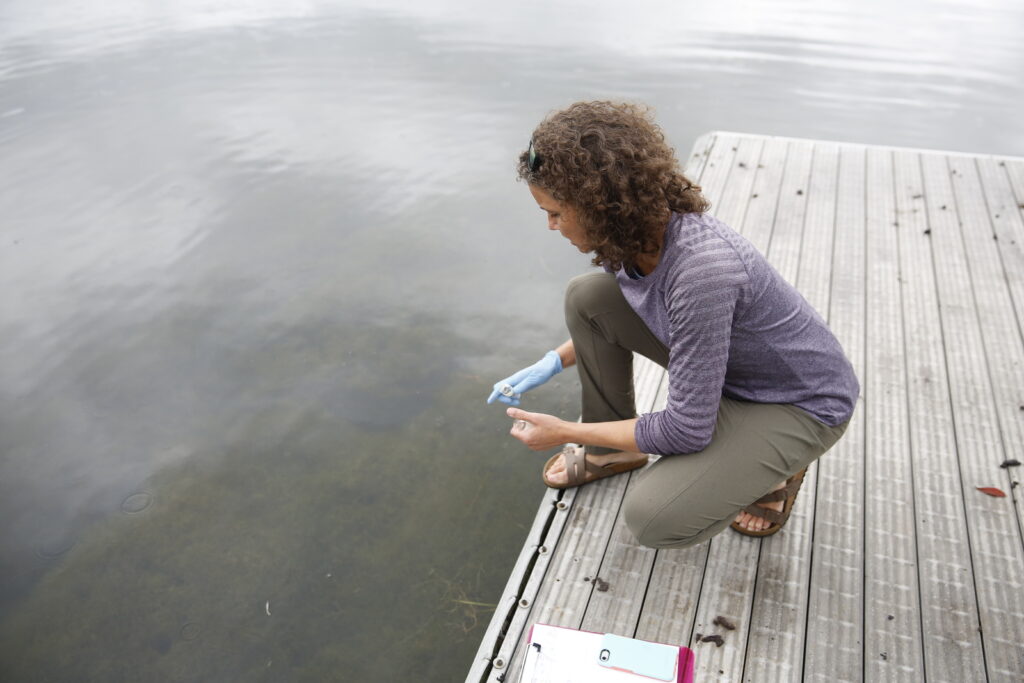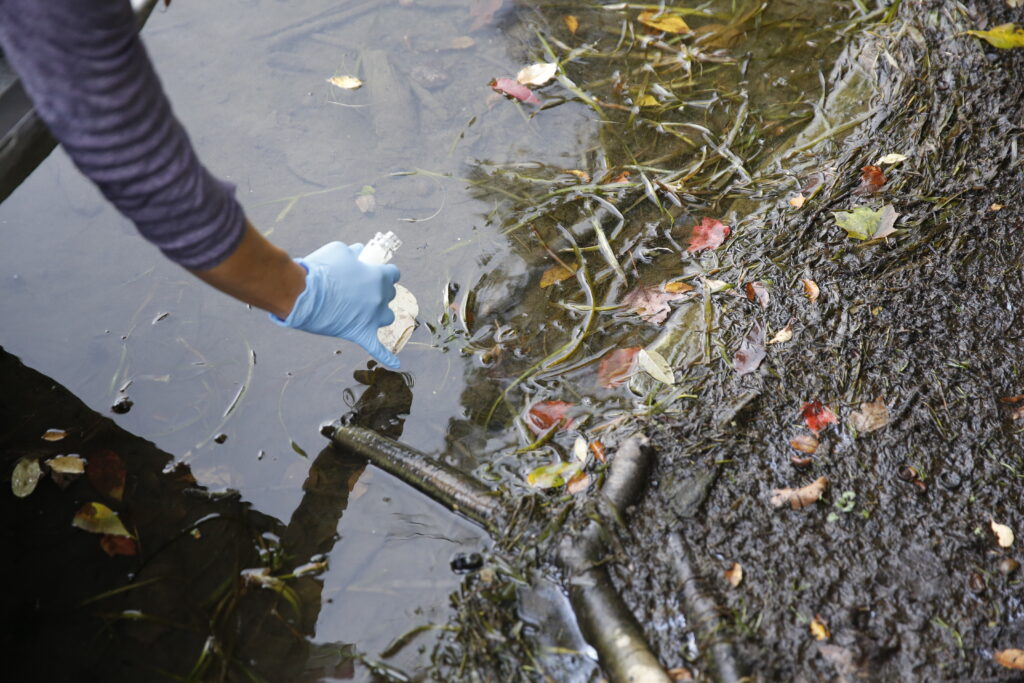
Biological Field Station Research Support Specialist Holly Waterfield conducts harmful algal bloom testing on Otsego Lake in Cooperstown. (Photo provided)
Clark Foundation Grants Support for
Continued HAB Testing by BFS
ONEONTA
Generous new grants from The Clark Foundation will allow researchers at SUNY Oneonta’s Biological Field Station in Cooperstown to continue to monitor and study the presence of harmful algal blooms on Otsego Lake, just in time for the summer season.
Earlier this spring, The Clark Foundation Board of Directors approved a grant with two components to the State University at Oneonta Foundation: a grant of $100,000.00 payable over two years to the BFS for general support, and a grant of $85,000.00 payable over two years for intensive monitoring and testing of harmful algal blooms. These “blooms,” known as HABs, occur when colonies of algae and cyanobacteria grow out of control and produce toxins that can make people and animals very sick.
The Clark Foundation is providing a one-to-one match for charitable donations to the BFS, up to $25,000.00. These funds will help to underwrite the cost of conducting intensive year-round monitoring and testing for the toxins associated with the cyanobacteria, as well as correlating the data with the distribution and abundance of the bacterium itself. To be included in the one-to-one match, gifts must be received by December 1 and can be made at https://suny.oneonta.edu/give or by check made payable to SUNY Oneonta Foundation and mailed to SUNY Oneonta, Division of University Advancement, 108 Ravine Parkway, Oneonta, NY 13820.
Following an unprecedented increase in HABs on Otsego Lake last year, BFS staff and students have closely monitored the blooms in an effort to better understand them and share that knowledge via the BFS website with the community, mitigating risk as well as concern. This is the second large grant the Biological Field Station has received related to HABs.
“The Clark Foundation’s support for these efforts assures that the public will routinely receive information on the concentration of the toxins associated with cyanobacteria at selected regions in Otsego Lake, both at the surface and in deeper waters, as well as meeting our obligations to the community by adhering to the ‘Plan for the Management Otsego Lake Watershed’ created in 1998, and updated in 2007, and our mission to serve the region by working to preserve the quality of life for those who use our aquatic resources recreationally and economically,” said Dr. Bill Harman—distinguished service professor of biology, Rufus J. Thayer Otsego Lake Research chair, and director of SUNY Oneonta’s BFS. “It is also important to acknowledge the citizens, environmental organizations and municipalities contributing to these efforts.”
Illnesses caused by HABs, though rare, can be debilitating and even fatal, particularly for household pets. People and animals can get sick if they ingest contaminated water; eat contaminated fish or shellfish; or swim, wade, or play in or near contaminated water.
Regular testing of the water is key to preventing problems. BFS research helps area homeowners, visitors, and officials understand what the level of risk is on a daily basis and decide whether certain precautionary measures should be taken.
“We are pleased to be providing this support to the Biological Field Station,” said Jane Forbes Clark, president of The Clark Foundation. “Dr. Harman and his team were quick to respond when the HABs first appeared last summer, and they used the data from its testing and monitoring of the lake to inform all of us on what actions to take. It is important to have timely and accurate data in order to make sound decisions about HABs. I invite others to contribute to the BFS so its capacity to test and monitor the health of our lake is as strong as it can possibly be.”


